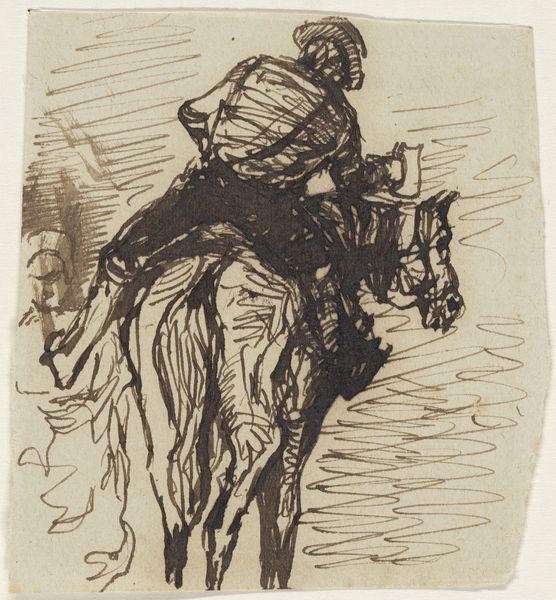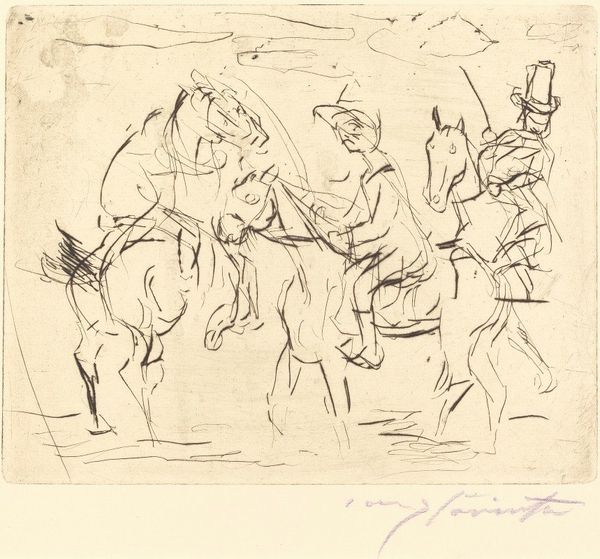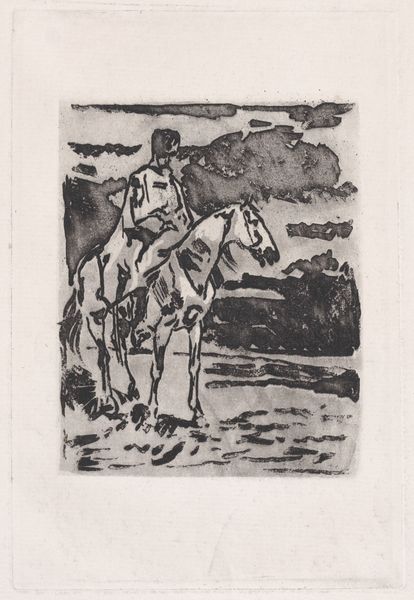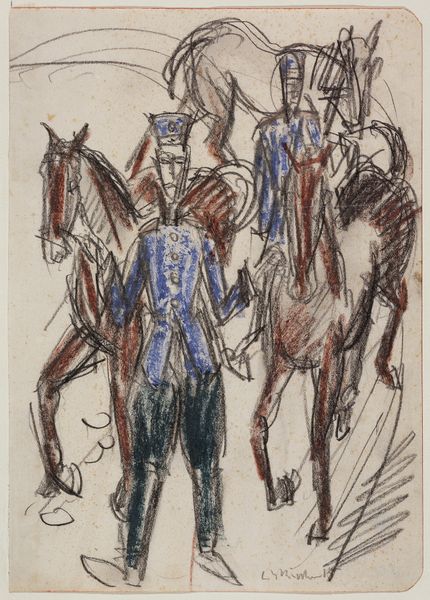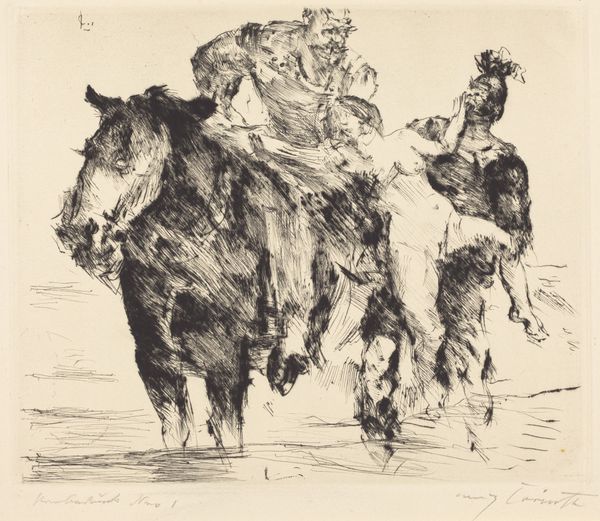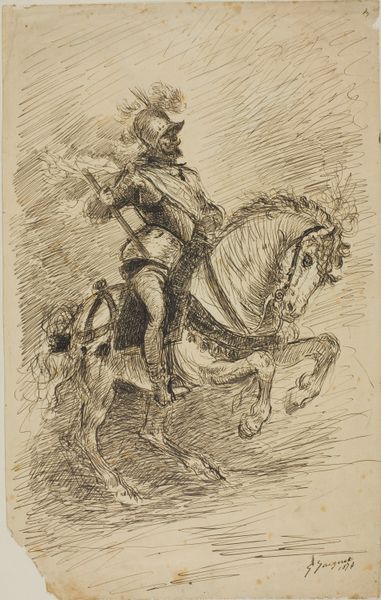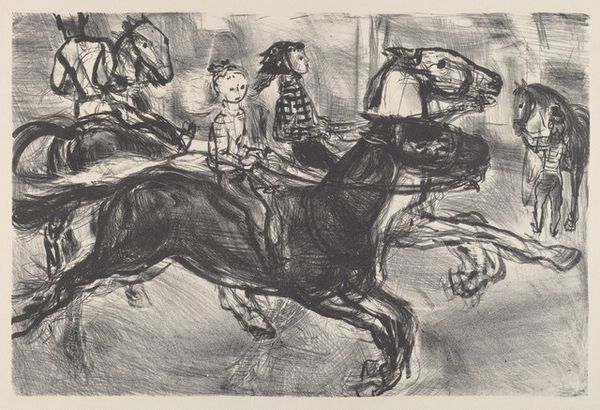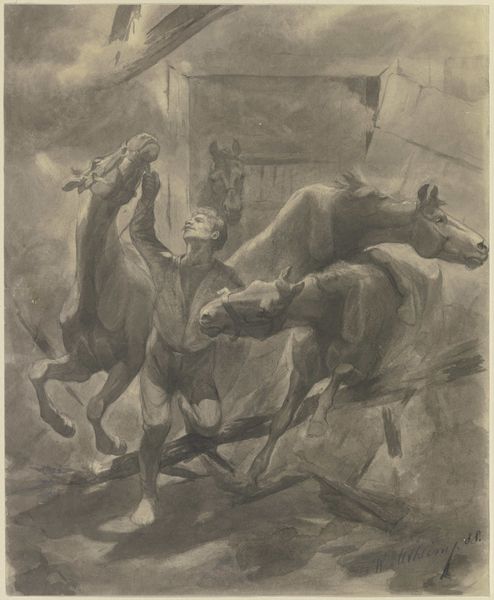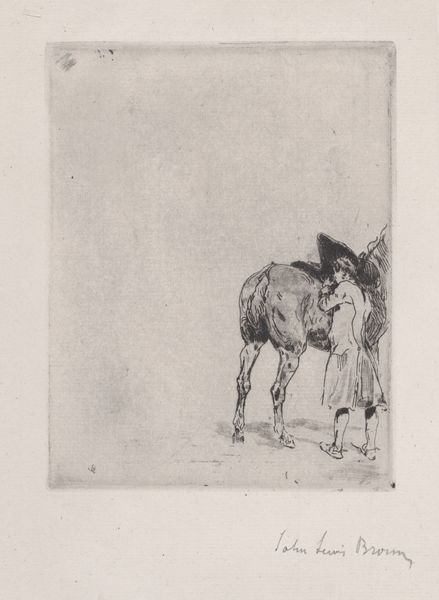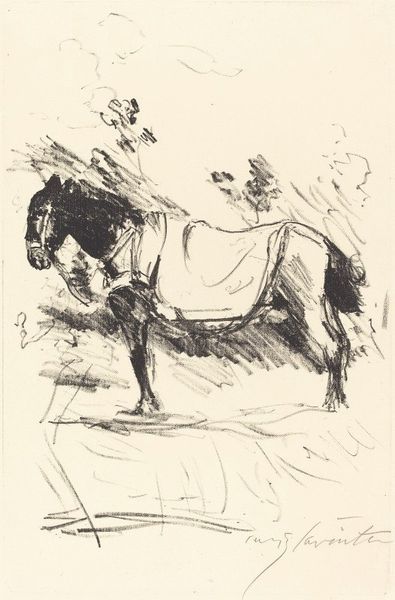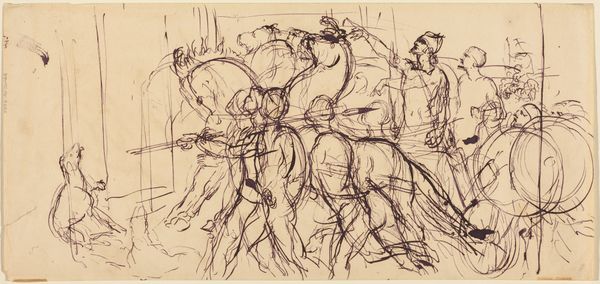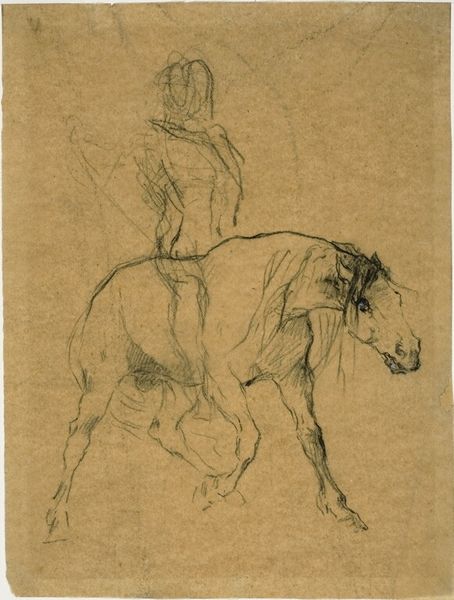
Dimensions: Image: 6 1/16 × 4 5/8 in. (15.4 × 11.7 cm) Plate: 6 3/16 × 4 3/4 in. (15.7 × 12 cm) Sheet: 17 11/16 × 12 3/8 in. (45 × 31.5 cm)
Copyright: Public Domain
Curator: Let's turn our attention to "Mounted Cossacks" a print and etching crafted by John-Lewis Brown sometime between 1847 and 1890. What's your first impression of this piece? Editor: Well, it has a ghostly quality, like a memory half-formed. The riders and their horses emerge from a mist. There's a sense of swiftness, but also transience, as if they could vanish at any moment. Curator: I'd agree. The limited tonal range, achieved through etching, helps to emphasize that atmosphere. Look at how Brown used hatching and cross-hatching to define the forms, not just of the riders and horses, but also of the vague suggestion of the landscape behind them. There’s real attention to detail in the horses' musculature, particularly, given the print’s size. Editor: There is such stark beauty in the etching, the deliberate ruggedness lends to its profound effect, does it not? One imagines Brown hunched over his workbench, each precise line scratched into the metal a physical act of translation. How romantic. It’s fascinating to consider what materials were at his disposal; perhaps a makeshift studio, relying on resourcefulness and improvisation, yet resulting in something refined and almost ethereal. Curator: The Romantic style aligns this work within broader 19th-century trends focusing on the individual and emotional experience and a renewed fascination with landscape and equestrian subjects, though I find it more of an instance of genre painting, actually. One sees depictions of Cossacks in paintings and prints of the period. Editor: They seem to be disappearing from view—into history—there is more to them than soldiers on horses. Curator: Certainly, prints like these aided the distribution of such imagery and thus created certain understandings. So, the means of reproduction become intrinsic to our reading of the image, right? The commodification of imagery has clear roots there, perhaps, more generally for visual arts of the time. Editor: Exactly! And by looking at the artwork in terms of its time in history, materials and physical artistic work, a more profound connection to the image and to Brown himself is achieved, and in seeing Brown's history, we see a larger part of the art historical past. Curator: It's fascinating to consider both the hand of the artist and the historical forces shaping the production and reception of this image. Editor: Yes, indeed. The visible textures and slight imperfections remind us of the material conditions of its making—the very breath and struggle infused into each line.
Comments
No comments
Be the first to comment and join the conversation on the ultimate creative platform.
